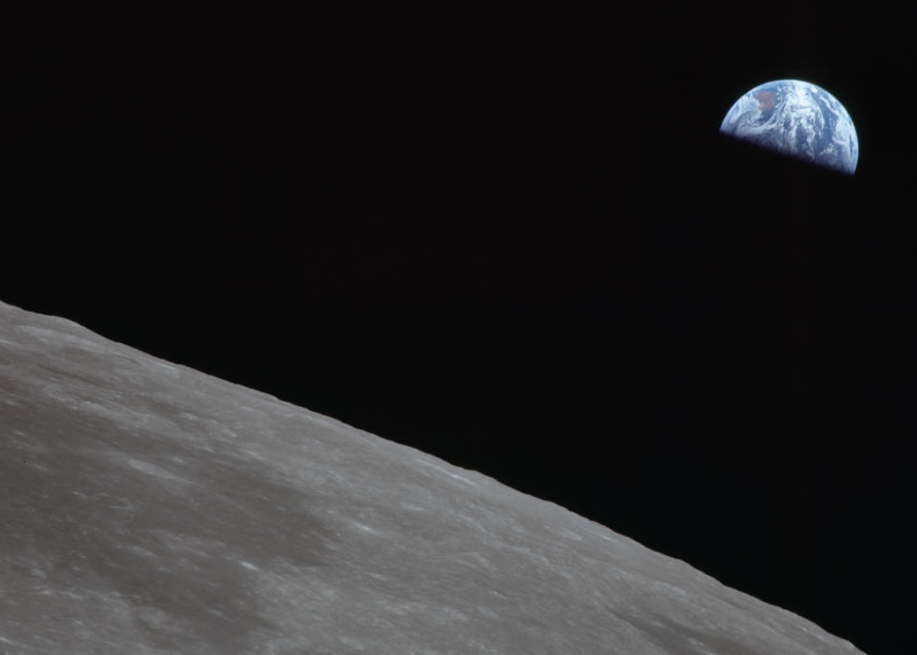
By M.V. Moorhead
The weekend of July 20 marks the 50th anniversary of the moon landing. I was 7 years old on those memorable days of 1969, when the Eagle, the lunar module of Apollo 11, touched down in the Sea of Tranquility.
I remember it, and the weeks and months leading up to it, with a vividness matched by only a few of my other early childhood memories.
I recall the gathering of relatives at our rural house, and one of my cousins saying, quite gratuitously, “There’s his foot comin’ down,” as we watched Neil Armstrong, in fuzzy black-and-whites video, take his legendary one small step.
Looking back, it seems like a corny, Norman Rockwell scene, but I also remember going outside shortly thereafter, into the cool, clear Pennsylvania night, and looking up at the moon, as if I’d see the guys waving down at me from above.
The feverish excitement that arose during those early years of the Apollo program turned countless people into space geeks, and I was certainly one of the most insufferable of them, wearying teachers, family members and even friends my own age with space chatter to the exclusion of almost everything else.
As it happened, the mother of one of my brothers in-law worked for a NASA contractor in D.C., so she had a connection; shortly after the safe return of the astronauts she somehow arranged for me to be sent an Apollo 11 press kit, complete with glossy prints of the iconic photos taken by Armstrong on that first lunar excursion.
I still have them.
Several years ago I had my moon pics appraised when Antiques Roadshow came to the Valley, and was told they’re fairly common, having been sent to thousands of schoolteachers at the time, and only worth about $20 as a collector’s item.

You can well imagine, however, that in second grade I felt like I had been entrusted with high-level government documents, and they made me the undisputed king of Show-and-Tell.
Moon mania waned in the years that followed, and public interest in the subsequent Apollo missions dropped off, though it was briefly and frighteningly revived by Apollo 13’s near-disaster.
Manned space exploration in general has been less aggressive and urgent in the decades since the Apollo program; after Apollo 17 in 1972, the last three Apollo missions were cancelled.
Endlessly fascinating to scientists, the Moon turned out to be, for the general public, about as interesting as a gravel pit.
No monsters, no slinky space-maidens like in Cat Women of the Moon (1953), just dust and craters.
Movies like Ron Howard’s classic Apollo 13 and the enjoyable fictions Gravity and The Martian have emphasized survival rather than the romance of space travel.
But if you want a movie to mark the anniversary of that first landing, a good option might be Destination Moon (1950).
This is a fairly serious-minded attempt, co-scripted by science-fiction master Robert A. Heinlein, to depict a scientifically plausible lunar expedition.
It’s a little too serious-minded, really. The director was the memorable character actor Irving Pichel, and his presence could have been used onscreen; the astronauts, led by John Archer (Anne’s dad) are painfully one-dimensional.
Woody Woodpecker turns up to explain the problems of space travel near the beginning, and he’s probably the richest and most complex character in the movie.
Having said that, Destination Moon ought to be seen—not only as an influential piece of pop culture but for its visual beauty.
The lunar surface, cracked like a dry river bed, the craggy mountains in the background, and the starscapes, designed by the great astronomical painter Chesley Bonestall, still have the power to stir the imagination even now, decades after we decided the Moon wasn’t all that worthwhile a destination.


